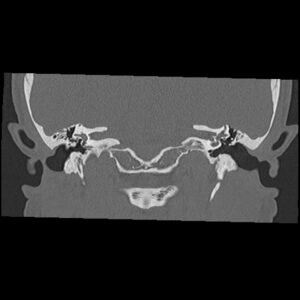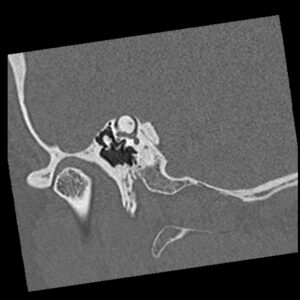True semicircular canal dehiscence sydnrome is rare, and active surgical treatment rarer still.
These CT scans show that threre is no bony coverage over the superior semicircular canal.
A combination of symptoms, radiologic dehiscence of the the left superior semicircular canal, and Vemps (a specific vestibular function test) showing increased amplitude and reduced thresholds are consistent with this diagnosis. It is important to note that radiologic dehiscence alone does not make a diagnosis of this syndrome as up to 5% of people will have evidence of this on routine scanning.
When the symptoms are severe surgical repair is indicated. This can be approached either by a transmastoid or middle cranial fossa approach. The decision is often made related to the pneumatisation of the petrous temporal bone


